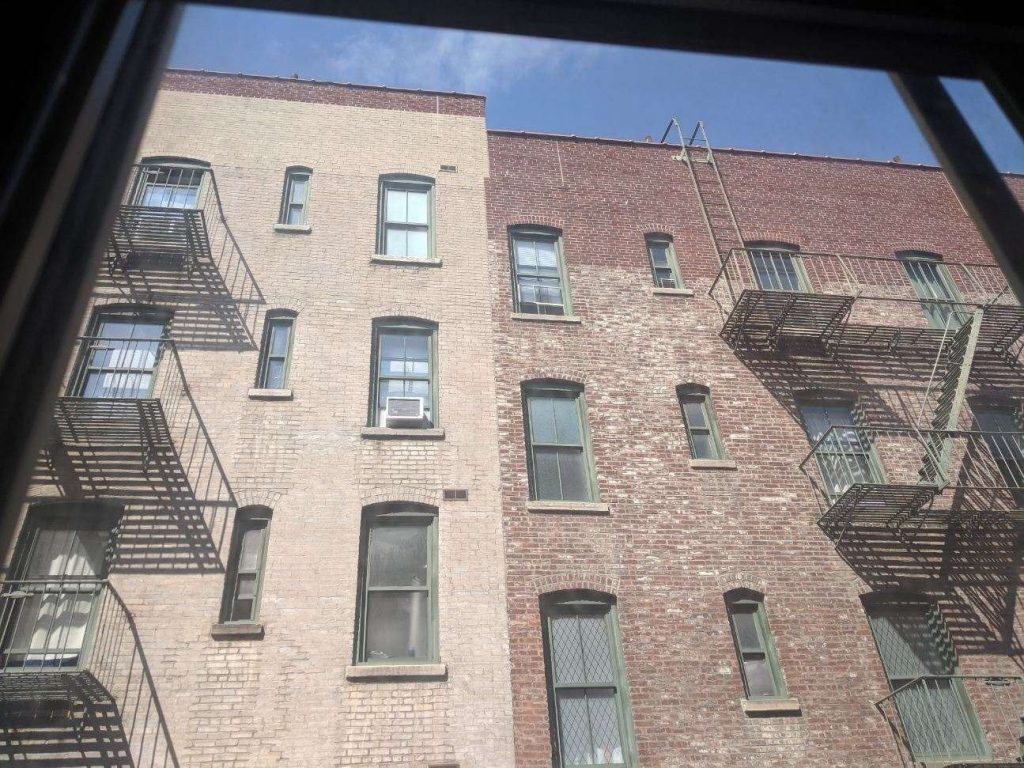
Yes, the view out of a back-facing apartment can sometimes lack a little warmth. But, it’s quiet!
When you’ve lived in New York City long enough, silence becomes a coveted luxury that can often feel impossible to find. Even apartment dwellers on the 15th or 20th floors have difficulty escaping the sounds of searing sirens and congested traffic below. This guy on the Upper East Side got so fed up he started suing noisy offenders.
However, there is a lesser-known secret for those seeking serenity in New York City: rear, or back-facing apartments. If you aren’t familiar with these living spaces, they are the units that typically face an adjacent garden or neighboring building. Because they are positioned far from the street, they are almost always shrouded in complete silence.
Yes, the Views Aren’t Great and the Light is Limited. But, It’s Quiet.
When my roommate and I first moved to New York City in 2013, we rented an Upper East Side apartment that faced the back of a building. It was so close in fact, that I could reach my hand out and touch the neighboring brick wall when I opened the kitchen window. The rooms didn’t get as much light as some of the front-facing units we had toured while apartment hunting, but we were sold on the quiet space.
Peace and Quiet is the Selling Point
Although these units typically offer far more tranquility than their front-facing counterparts, they do pose some setbacks, including limited light and views. I spoke with several New York City real estate agents to learn more about what is at stake when listing these rear-facing units. Every agent I spoke with emphasized the same sentiment: the peaceful space is the primary selling point.
“I have had several buyers request quiet apartments, especially the bedroom,” explains Cassie D’Agata Fallon, an agent with Compass. “I tell them that if an apartment is in the back of a building, it is usually a safe bet it will be quiet.”
See Yorkville Rentals Under $3,000 a Month Article continues below
This apartment at 328 E. 73rd St. has a bedroom with a south-facing window and the listing notes describe it as “peaceful.”
Cassie, who is currently selling a rear-facing unit on East 73rd Street, told me that the owner, who works from home and has lived in the apartment for 15 years, didn’t hear any noise outside of her apartment building when construction began on the Second Avenue subway a few years ago. Her unit is so quiet in fact, that she can even hear an owl behind her building from time to time. Who knew that owls exist in NYC?!
You Might Save on Price, But Probably Not
In terms of pricing, back-facing units are priced similarly to apartments that face the street. “Pricing an apartment comes down to square footage, number of bedrooms, floor height, and the selling price that similar units in the building and neighborhood have closed for,” explains JoAnne Kao, a real estate agent with Berkshire Hathaway HomeServices New York Properties who is currently selling a back-facing studio at The Armory. “Facing the back of a building would not be the primary deciding factor when considering a lower price.”
Kimberly Vieira, an agent with Douglas Elliman, felt similarly when asked about pricing. “Unless the view is really bad or the unit is extremely dark, back-facing units are on par with the pricing found in front-facing units,” she explained.
Vieira said that she always specifies that it is a rear-facing apartment in the listing description and stresses that the space is extremely quiet and private. “My listing at 217 East 29th Street faces a garden with beautiful foliage and gets great light, so the fact that it faces the back is a big selling point when showing the apartment.”
Hey look! There’s some greenery down there!
And Honestly, How Much Time Do You Spend in Your Apartment?
To those who are unsure if choosing a rear-facing unit is the right choice, keep this in mind: the vast majority of New Yorkers spend at least 8 to 10 hours a day outside of their apartment at the office (unless they work remotely) and are rarely home in time to catch the sunlight. If it’s sunny on the weekends, city dwellers will most likely spend their time outside enjoying the weather. For those in rear-facing units who seek sunlight, lighting designers can offer options that will mimic natural light and provide stylish window shades that will detract from a unit’s lack in views.
As with anything, there are pros and cons to any apartment. Living in a rear-facing unit ultimately boils down to the dweller’s primary needs in a home. For New Yorkers who work night shifts and need to sleep during the day or for those who work remotely – particularly writers, musicians, and other creatives who need a quiet space to focus – finding an apartment that offers complete silence might be more important than living in a front-facing, light-filled unit that is too closely connected to the sounds of the busy city below.
Check Out Brooklyn Rentals Under $3,000 a Month Article continues below